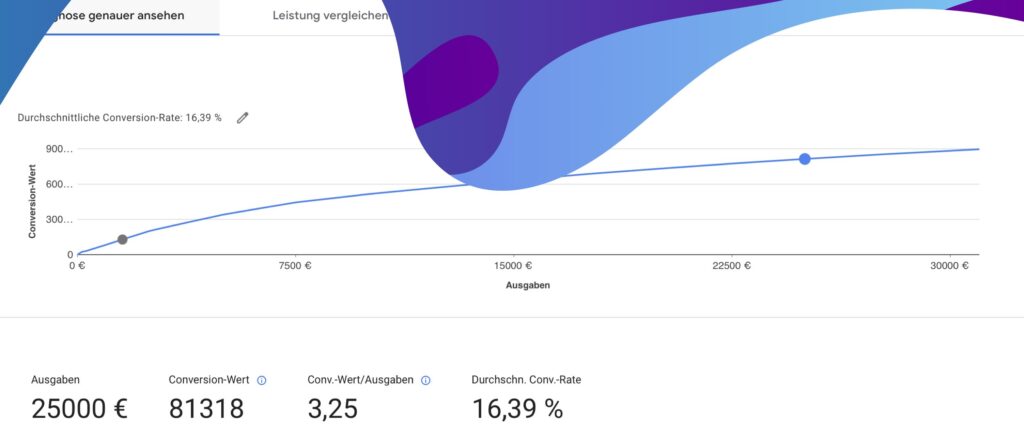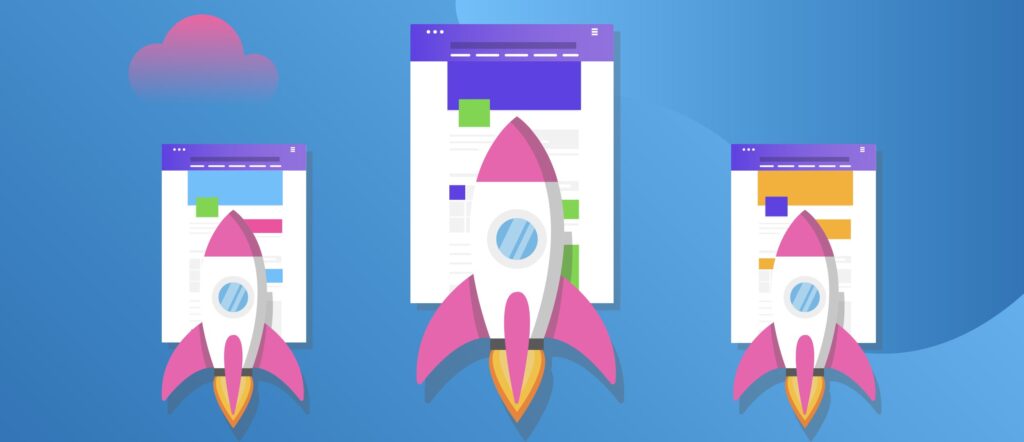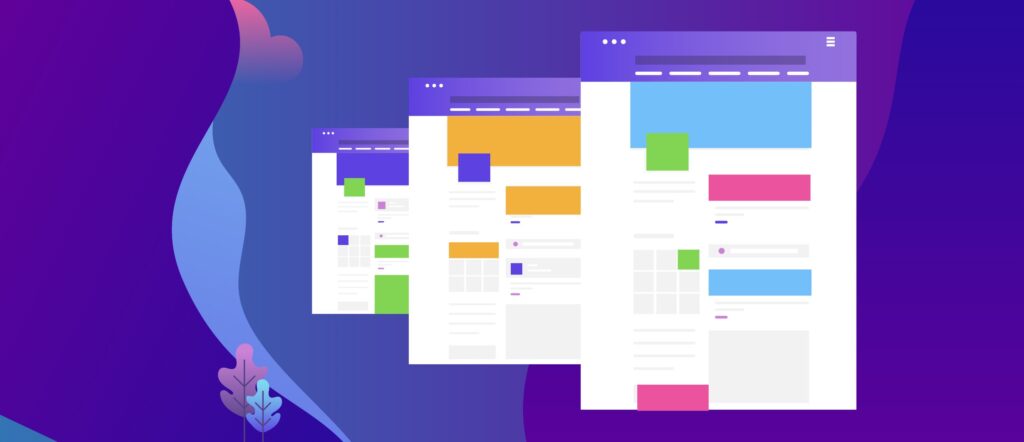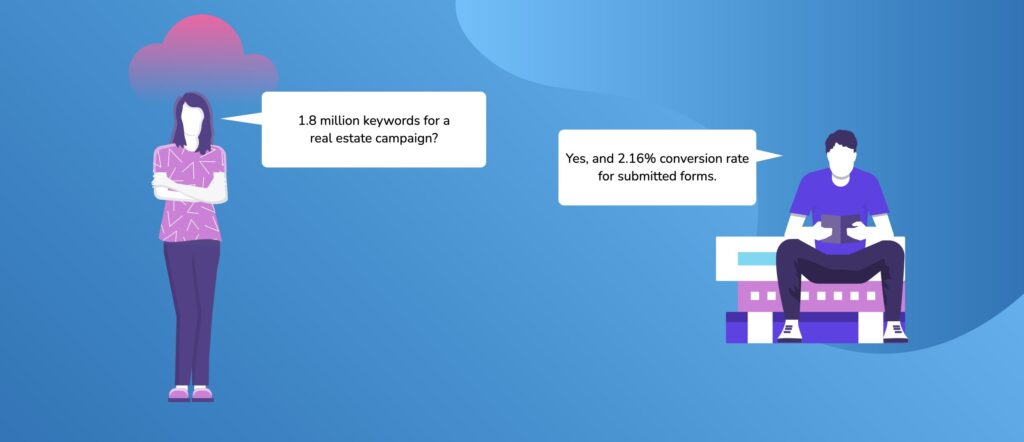
Booster for Your KPIs – How to Overcome the Saturation Point of Your SEA Campaigns
In the dynamic field of Search Engine Advertising (SEA), marketers typically encounter a fascinating phenomenon: as the budget increases, campaigns reach a saturation point where the value of conversions no longer increases in proportion to the invested budget. This phenomenon resembles a significant challenge, as SEA agencies are usually directly tied to the deployed budget through their billing models. Hence, both strategic considerations and tactical adjustments are necessary to continue maximizing the efficiency of SEA campaigns. This article sheds light not only on the definition and causes of the saturation point but also presents ways to successfully overcome it.
The Saturation Phenomenon in Detail
The saturation point in SEA campaigns occurs when additional budget no longer results in a significant increase in conversion rates. At this point, each further investment in the campaign leads to diminishing returns, meaning that the additional conversion value no longer increases at the same rate as the additional budget deployed. This can be attributed to various factors, including market saturation, limited audience reach, and an increase in cost per click (CPC) as competition for top ad placements intensifies.
The performance planner provided by Google predicts this for almost any campaign. The curve, which represents the expected conversion value in relation to the deployed budget, becomes flatter over time. Although a campaign remains profitable as long as the conversion value brought in per euro of budget is greater than 1, meaning the ROI is positive, it is highly attractive for SEA agencies to be able to boost a campaign even with a very high budget.
Causes of the Saturation Point
Reaching the saturation point in SEA campaigns can be caused by a variety of factors that work together to diminish the efficiency of the deployed budget. One of the main causes is natural market saturation, where there simply is a natural limit to the number of potential customers looking for the advertised products or services. Once the majority of this target group is reached, additional spending no longer leads to a proportional increase in conversions. Closely related to market saturation is the phenomenon of audience exhaustion, which occurs when the most specific and relevant segments of the target audience are already maximally exploited, so further advertising measures only yield minor improvements in conversion rates.
Another important aspect is the increase in cost per click (CPC), resulting from the increasing competition for the best ad placements. With rising competition, bids for the most coveted keywords and ad positions go up, driving up the costs for achieving additional conversions. This can become a significant challenge, especially in highly competitive markets, as companies compete for a limited number of premium ad placements while trying to scale their campaigns within an efficient budget frame.
Measures to Overcome Saturation
To tackle the challenges of the saturation point in SEA campaigns, marketers can employ several key strategies. Detailed segmentation of the target audience often proves to be the most effective measure, as it allows for the identification of new niches and previously inadequately addressed target groups. This leads to more precise targeting and can improve conversion rates. Similarly, optimizing ad creativity plays a crucial role. Continuous adjustment and testing of different ad formats, texts, and images can recapture the attention of the target audience and increase the click-through rate (CTR). In particular, Smart Bidding strategies, which increasingly use machine learning and automated bidding strategies, are getting better at making bids more efficient and optimally deploying the budget in the long term.
Expanding the keyword set can also be an excellent measure to integrate additional, relevant keywords that open up new target audience segments and thus increase the conversion value. This should simultaneously reflect in the optimization of landing pages regarding user experience, to maximize the value of each visitor generated through SEA in terms of conversions.
Especially the last two points mentioned can give a real boost to a campaign. This is particularly interesting because informational search queries, in their entire diversity, account for over 80% of search traffic according to a study. Nonetheless, SEA agencies typically focus on a handful of keywords with generic landing pages that mainly concern transactional search queries. Why jump into this shark tank?
The Effort of Tailored Content for Each Keyword as a Barrier
The main reason for this is the huge effort involved in creating tailored content for all these keywords. Despite the significant competition situation in the transactional shark tank, the effort here still pays off significantly more for SEA agencies, as keywords from this category inherently have a higher conversion potential and are limited in complexity. However, cumulatively, especially the informational and also the navigational sector (think of an advertiser with over a hundred branches in different cities) represent a sleeping giant, which, however, can only be efficiently awakened with the right tools of automatically created content for each search query.
lyftyfy enables highly individual ads and landing pages for every keyword
The automated creation of highly individual ads & landing pages for any conceivable topic in SEA is a feature of the new campaign architecture lyftyfy. This tool takes a new path in the SEA area. Dynamic content is automatically generated for each keyword combination with this tool, to answer every conceivable search query with the precisely tailored content. The number of pages to be generated, whether hundred, thousand, or up to 4 million (the limit of Google), does not affect the effort, as it remains the same.
Although based on the same template, each landing page can look completely unique and handmade. If you do not have individual content available for some keywords or cannot create it due to time constraints, you can either define standard content or simply hide the individualized section for the affected keywords.
In this way, you elevate the steadily decreasing ratio of conversion value to costs at a certain point with increasing budget to an entirely new level. Thus, you optimize not only in the short head but also fully exploit the potential of your campaign in the long tail.
Conclusion
With increasing budget, campaigns reach a saturation point where the value of conversions no longer increases in proportion to the invested budget. Through innovative approaches in SEA, marketers are now able to not only keep their campaigns profitable but also overcome the saturation point by elevating the conversion value in relation to the costs to a new level. This is now possible with the automatic generation of tailored ads and landing pages for every conceivable campaign, without excessive effort.


